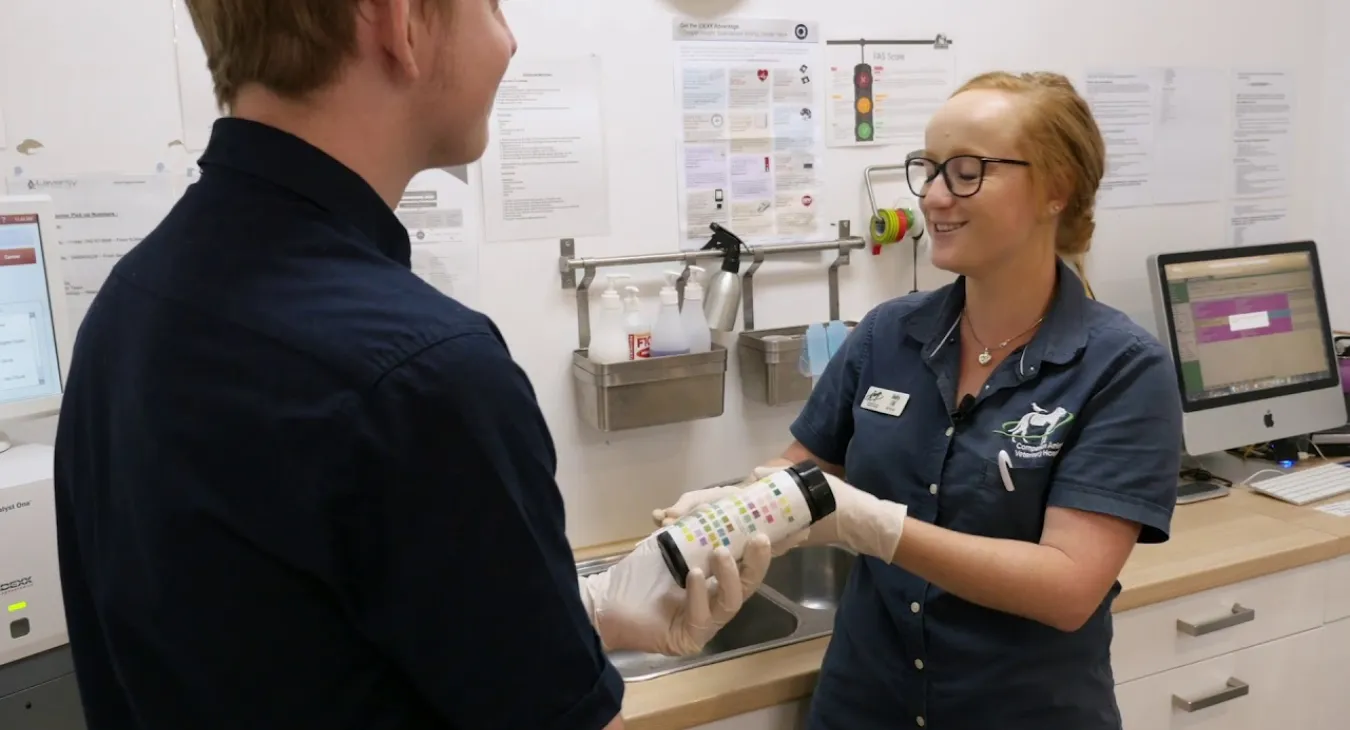Today, I want to take you through a crucial diagnostic procedure we perform at our clinic – a urinalysis test. We recently conducted this test on Rocco, a cat experiencing difficulty urinating, and I thought it would be a great opportunity to explain the process.
The Importance of Urinalysis
Urinalysis is an essential diagnostic tool that helps us understand a pet's urinary tract health. It can reveal a range of issues, from urinary tract infections to kidney problems, and is vital in diagnosing and treating pets like Rocco.
Step-by-Step Urinalysis Procedure
-
Charging the Test: The process begins by charging the urinalysis on the pet's file, which sends the information to our lab machine.
-
Using a Dipstick: We use a dipstick that has different squares indicating various levels in the urine, such as blood, protein, glucose, and pH changes. A small amount of urine is applied to each square, and the color change indicates any abnormalities.
-
Interpreting the Results: The dipstick is then compared to a reference guide to interpret the results. Each color change (or lack thereof) on the dipstick squares corresponds to different urine components.
-
Measuring Specific Gravity: Next, we measure the urine's specific gravity, which tells us how well the kidneys are concentrating the urine. We use a refractometer for this, placing a drop of urine on the device and reading the gravity level.
-
Recording the Results: The specific gravity and pH levels are recorded in the pet's file, along with the dipstick results.
-
Review by a Vet: Once the test is complete, the vet reviews the results to identify any abnormalities and determine the next steps in the pet's treatment.
Training and Teamwork
Our trainee nurse, Harry, assisted with Rocco's urinalysis, learning each step of the process. This hands-on experience is invaluable for our trainee staff, ensuring they gain the skills necessary to provide the best care for our patients.
Conclusion
Urinalysis is a straightforward yet powerful diagnostic tool. It provides us with vital information about a pet's urinary health, allowing us to diagnose and treat various conditions effectively. At Companion Animal Veterinary Hospital, we're committed to using the latest diagnostic techniques to ensure your pets receive the best possible care.
If you have any concerns about your pet's urinary health or any other health issues, don't hesitate to reach out to us. We're here to help your furry friends stay healthy and happy.
Take care, and remember, we're always here for your pet's health needs!
Read more articles
- Log in to post comments



